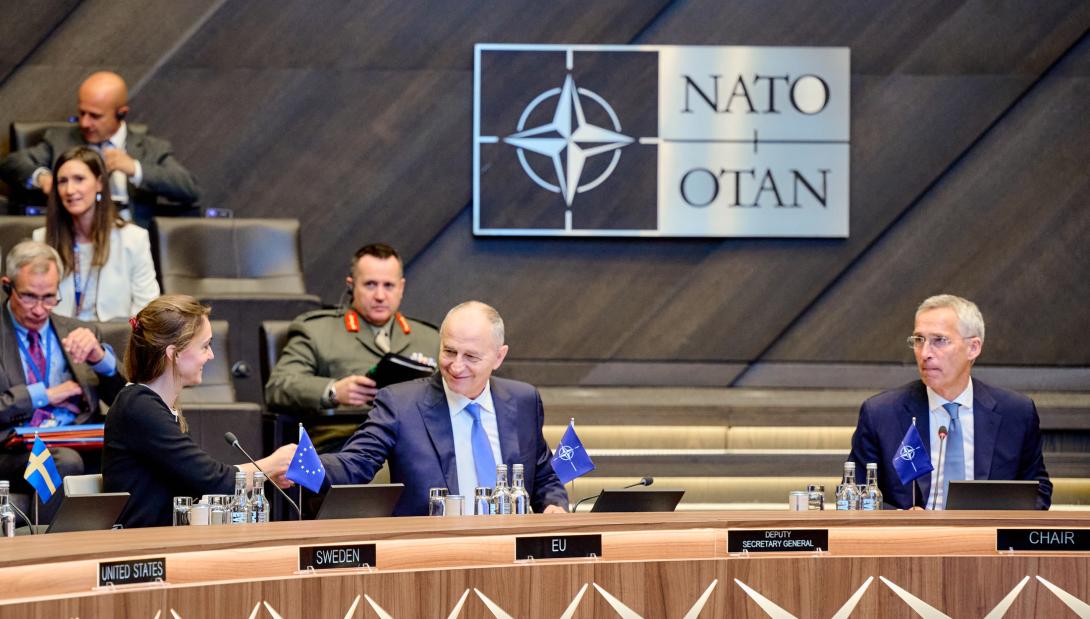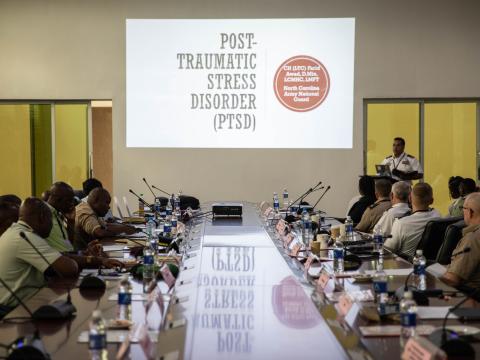NATO’s Support of Ukraine’s C4 Capabilities
A targeted NATO trust fund established in 2014 has brought Ukraine’s communication, command and control, and computing, or C4, capabilities to new levels. The country desperately needed to move away from Soviet-era centralized command and control equipment and techniques that are no longer in practice in Western military operations, explained Gerard Elzinga, branch head, Digital Capabilities, NATO Headquarters, speaking via video link at AFCEA’s TechNet Transatlantic on December 7.
“The main aim is to improve Ukraine’s C4 capabilities and to provide better security and protection for themselves,” he noted.
At first, the fund was established by lead nations—Canada, Germany and the United Kingdom—with contributions, including in-kind support, from Denmark, Iceland, Latvia, Lithuania, Poland, Turkey and the United States. Since the initial funding of 1.8 million Euros, the support has increased to 5.15 million Euros. In 2021, the trust fund merged into NATO’s comprehensive assistance fund, and is instead run by a NATO committee. And while this approach presents more funding opportunities, it also means C4 projects have to compete against other nonkinetic-related funding initiatives, such as winter military clothing or logistics, says Elzinga.
The main aim is to improve Ukraine’s C4 capabilities and to provide better security and protection for themselves.
However, it is easier for the NATO countries to support Ukraine’s C4 efforts under the newer model, as it provides shared liability to implement a project. “Although it may not be a lot, it can be a game changer, with a little money and investing in the right projects, you can make a significant change to the capabilities that a nation has, and that has certainly proven its worth in Ukraine,” he explained.
After two initial C4-related projects brought improvements to Ukraine’s civilian air traffic control and to their incident response management system, NATO pursued secure communications and force positioning capabilities for Ukraine under the Enhanced Mobile Centralized System (EMCS), which leverages the Iridium satellite system.
“In theater, there are secure radios using a specific algorithm as well as a number of GPS trackers that all connect via the Iridium system, Elzinga said. “And they can communicate with each other in order to support manned-control in the operations area.”
And although use of the system started slow in 2018, over the years the Ukrainian Navy and Army have employed the EMCS heavily to maintain proper situational awareness of their troops and to exchange securely command and control information.
The alliance is now expanding the initial Iridium EMCS system to add satellite communications (SATCOM) capabilities that support command and control and joint intelligence, surveillance and reconnaissance. A new effort, called Slingshot, combines communications between tactical combat radios and SATCOM.
Knowledge sharing by NATO countries to Ukraine on C4-related concepts of operations, doctrine, processes, force training, explaining standards and helping Ukraine to participate in various NATO C4-related exercises has also proven to be beneficial. NATO countries are already in the third phase of the C4 knowledge sharing effort with Ukraine.
In addition, NATO is supporting Ukraine’s Delta project that has evolved from a situational awareness system to a full-blown battlefield management system, Elzinger added. “It is fully interoperable with NATO standards,” he said. “It integrates with various NATO data links, including the Link-16 system and the GPS trackers that are part of the Iridium system. It combines various video feeds from drones, but also from mobile phones, for example. And with that, they can come up with a full common operational picture of the battlefield.”
Given the nefarious and lethal unmanned aerial threat from Russia, NATO is aiding Ukraine’s counter UAS capabilities, both for Ukraine forces as well as the State’s Security Service.




